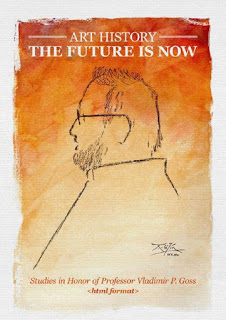Medieval History

- New Books On Hungarian Medieval Art
As this blog is aimed for an international audience, I generally only write reviews of books published in English or other western languages. However, in this post I would like to call attention to a few books published mostly in Hungarian...
- Presentation Of Three Books On Medieval Slavonia
Three new books on medieval Slavonia will be presented next week at the Central European University of Budapest. All three books are registers, mostly dedicated to the early medieval artistic production and culture between the Sava and the Drava rivers....
- Conference On Medieval Ecclesiastical Architecture In Transylvania
The monastery church of Ákos (Acâ?),the most important Romanesque monument of Szatmár CountyThis coming weekend, on October 8-10, 2010, an international conference will be dedicated to medieval ecclesiastical architecture in Transylvania. Jointly...
- New Books On Medieval Archaeology
Given the tumultuous history of Hungary, archaeology plays a major role in interpreting the medieval heritage of the Kingdom (see my previous post on this). Excavations in this field yielded spectacular results, much of which is now summarized...
- Architecture In Medieval Southern Hungary
A long-awaited book has finally appeared last week. Dedicated to medieval architecture in the southern part of the Kingdom of Hungary, the book has been in the making for about 10 years. In a sense it is a continuation of a volume focusing on the southern...
Medieval History
Romanika.net presents: Art History - The Future is Now
Romanika.net, a Croatian website dedicated to the project "The Romanesque between the Sava and the Drava Rivers and European Culture," published a new online book on medieval art. Titled Art History - The Future is Now, the book contains studies published in Honor of Professor Vladimir Peter Goss celebrating his 70th birthday, 45 years of publication, and 40 years of university teaching. The editors of the volume are Maja Cepeti?, Danko Dujmovi?, Vjekoslav Juki?, Aleksandra Nikoloska.
The studies in the pdf volume are published in English or Italian language (also including some in Croatian and German), and their subject matter ranges from ancient portraiture to Romanesque architecture and sculpture to Italian Gothic art. The first section represents contributions by the 'Masters and their Heirs Apparent', the second by the 'Young Lions'. The authors come from various countries (9 total) - and include one Hungarian, Béla Zsolt Szakács, who writes on Santo Stefano Rotondo in Rome. Among the authors there are Archeologists, Art Historians, Cultural Anthropologists, Linguists, reflecting Professor Goss? true interdisciplinary orientation ? of looking for the best in related fields. The book also contains a biography and bibliography of Professor Goss, as well as a study by Goss himself - reflecting on the present state and future of art and its history.
While calling attention to this new online publication, I would also like to recommend the romanika.net website in its entirety, as it reflects the interests of Professor Goss very well. The research project, to which this website belongs, surveys Romanesque sites between the Sava and the Drava rivers - the area now generally known as "Continental Croatia", which was part of the Kingdom of Hungary throughout the Middle Ages (equalling the northern part of Slavonia). The project is dedicated to "discovering the sites lost and forgotten long time ago, and thus creating outlines of a totally lost and forgotten cultural landscape. The main goal is to make the art of the Pre-Romanesque (both pre-Christian Slavic and Christian) and Romanesque in Croatia receive recognition and appreciation it fully deserves."
From this space and in the form of this brief post, I would like to salute Vladimir Goss, and wish him a lot of success in carrying this important project further! Sretan ro?endan!
Maja Cepeti?, Danko Dujmovi?, Vjekoslav Juki?, Aleksandra Nikoloska, eds.: Art History - the Future is Now. Studies in Honor of Professor Vladimir Goss. Rijeka, Faculty of Humanities and Social Sciences, 2012. 433 pp. Available online at: http://www.romanika.net/art-history-the-future-is-now-studies-in-honor-of-professor-vladimir-p-goss/
- New Books On Hungarian Medieval Art
As this blog is aimed for an international audience, I generally only write reviews of books published in English or other western languages. However, in this post I would like to call attention to a few books published mostly in Hungarian...
- Presentation Of Three Books On Medieval Slavonia
Three new books on medieval Slavonia will be presented next week at the Central European University of Budapest. All three books are registers, mostly dedicated to the early medieval artistic production and culture between the Sava and the Drava rivers....
- Conference On Medieval Ecclesiastical Architecture In Transylvania
The monastery church of Ákos (Acâ?),the most important Romanesque monument of Szatmár CountyThis coming weekend, on October 8-10, 2010, an international conference will be dedicated to medieval ecclesiastical architecture in Transylvania. Jointly...
- New Books On Medieval Archaeology
Given the tumultuous history of Hungary, archaeology plays a major role in interpreting the medieval heritage of the Kingdom (see my previous post on this). Excavations in this field yielded spectacular results, much of which is now summarized...
- Architecture In Medieval Southern Hungary
A long-awaited book has finally appeared last week. Dedicated to medieval architecture in the southern part of the Kingdom of Hungary, the book has been in the making for about 10 years. In a sense it is a continuation of a volume focusing on the southern...
